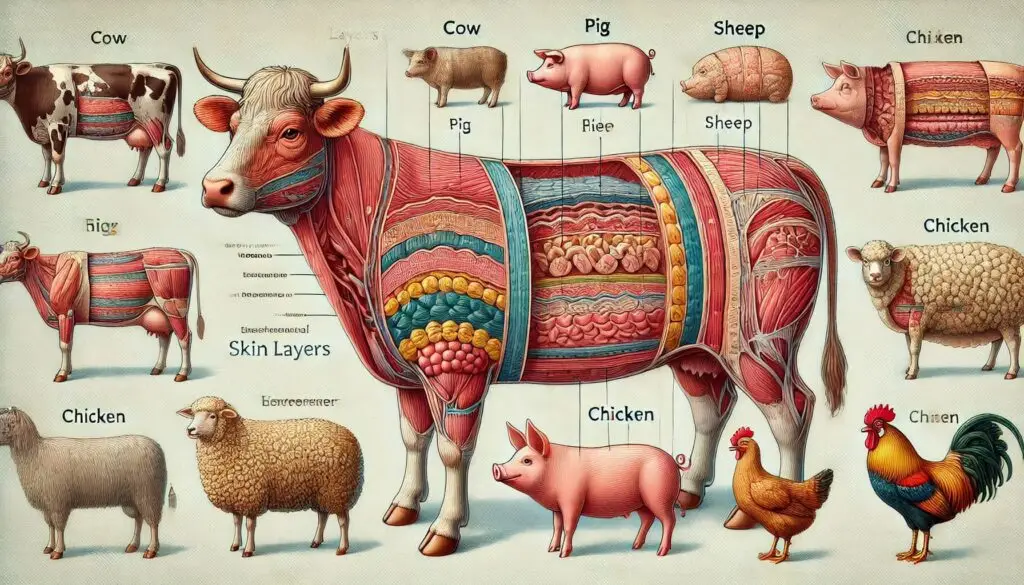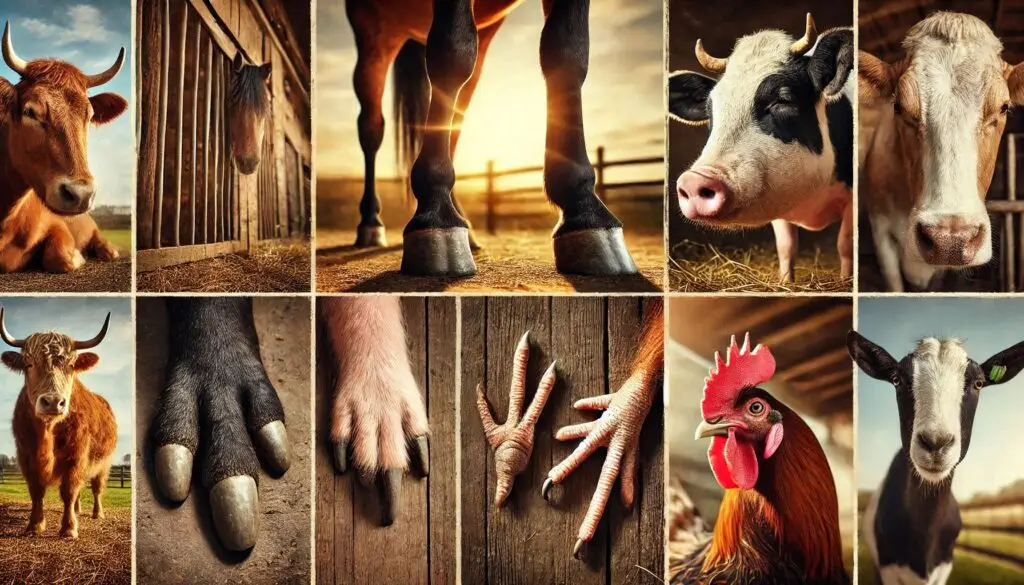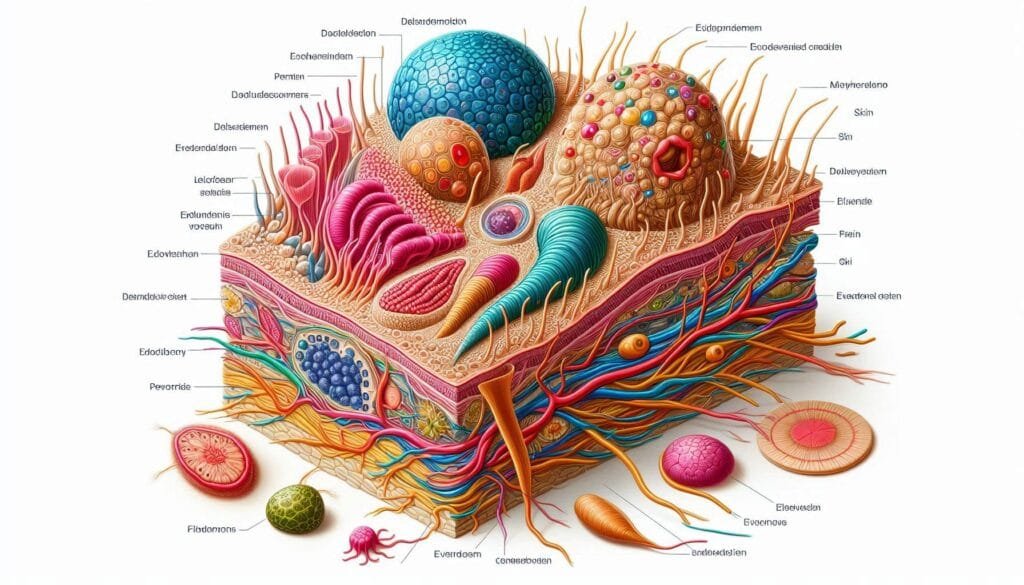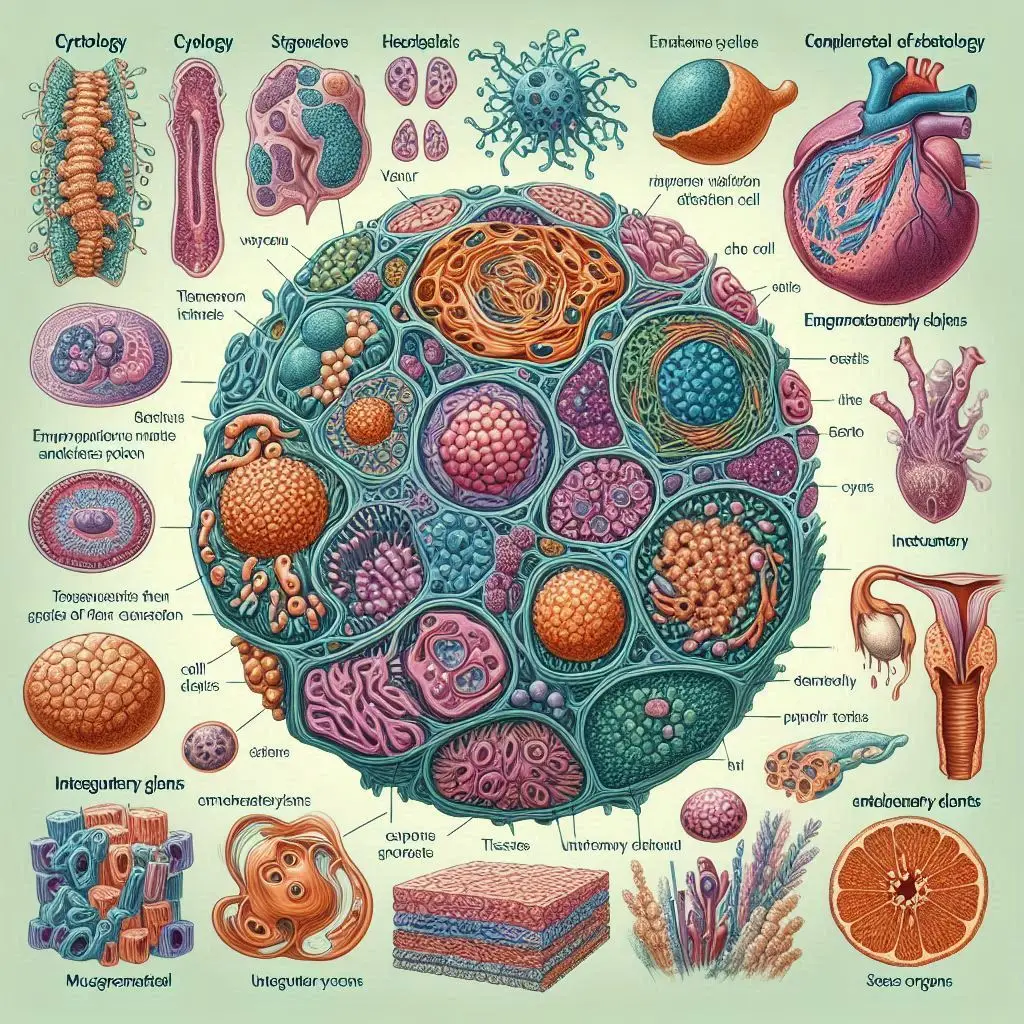Skin of Farm Animals

The Importance of Skin in Farm Animals
Skin serves as the first line of defense against environmental threats. It protects against pathogens, regulates temperature, and aids in sensory perception. For more detailed insights into animal skin health, visit The Merck Veterinary Manual.
The Epidermis: The Outer Layer
The epidermis is the outermost layer of skin. It acts as a barrier to protect underlying tissues. This layer is primarily made up of keratinized stratified squamous epithelium.
Structure of the Epidermis
The epidermis consists of several layers:
- Stratum Corneum: The outermost layer made up of dead cells filled with keratin.
- Stratum Lucidum: Found only in thick skin areas (like the soles of hooves).
- Stratum Granulosum: Contains keratinocytes that begin to die and lose their nuclei.
- Stratum Spinosum: Provides strength and flexibility.
- Stratum Basale: The deepest layer where new cells are generated.
For more information on skin layers, check out PubMed Central.
Functions of the Epidermis
The epidermis performs several vital functions:
- Protection: Shields against pathogens and physical damage.
- Water Retention: Prevents dehydration by minimizing water loss.
- UV Protection: Melanocytes produce melanin to protect against harmful UV rays.
The Dermis: The Supportive Layer
Beneath the epidermis lies the dermis. This layer is much thicker and consists mainly of connective tissue.
Structure of the Dermis
The dermis can be divided into two main layers:
- Papillary Layer: Contains thin collagen fibers and is rich in blood vessels. This layer interlocks with the epidermis through structures called dermal papillae.
- Reticular Layer: Made up of dense irregular connective tissue with thicker collagen fibers.
Functions of the Dermis
The dermis has several essential functions:
- Thermoregulation: Blood vessels help regulate body temperature.
- Sensation: Contains nerve endings that provide sensory feedback.
- Support for Appendages: Houses hair follicles, sweat glands, and sebaceous glands.
For a deeper understanding of dermal functions, visit ScienceDirect.
Hypodermis: The Underlying Layer
The hypodermis (or subcutis) is not technically part of the skin but plays an important role.
Functions of the Hypodermis
- Insulation: Helps maintain body temperature by providing thermal insulation.
- Energy Storage: Serves as an energy reserve for the animal.
- Cushioning: Protects underlying muscles and bones from impacts.
Variations Among Farm Animal Species
Different farm animals exhibit variations in skin structure based on their environments and purposes.
Cattle and Buffalo
Cattle have a thicker epidermal layer compared to other livestock. Their skin contains pronounced papillomatous structures that enhance protection against environmental stressors.
Sheep
Sheep have a unique adaptation in their skin structure that supports wool production. Their hypodermal layer is particularly thick, providing insulation against cold weather.
Goats
Goats typically have thinner dermal layers with fewer hair follicles than sheep. This variation allows for different adaptations to their environments.
Camels
Camels possess specialized skin adaptations that help them survive in arid conditions. They have numerous sweat glands associated with hair follicles to assist in temperature regulation. For insights into camel adaptations, refer to National Geographic.
Skin Health in Farm Animals
Maintaining skin health is crucial for overall animal welfare. Skin conditions can lead to discomfort and affect productivity.
Common Skin Issues
- Parasites: External parasites like ticks and mites can cause significant irritation.
- Infections: Bacterial or fungal infections can lead to dermatitis or other serious conditions.
- Allergies: Allergic reactions can manifest as rashes or irritation on the skin.
For more information on managing skin diseases in livestock, visit Veterinary Record.
Conclusion
Understanding the structure and function of the epidermis and dermis in farm animals is essential for effective management practices. By recognizing variations among species and monitoring skin health, farmers can ensure better welfare for their animals.
Regular veterinary check-ups are vital for early detection of skin issues. Farmers should also provide appropriate nutrition to support healthy skin development.
More from Veterinary Anatomy:






Responses